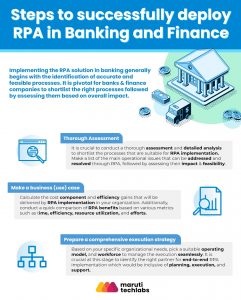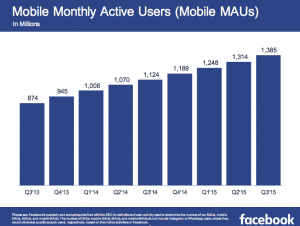See how the MarTechBot responds to a prompt and how the prompt can be improved. Today: job responsibilities for a data warehouse architect.

Best of the MarTechBot showcases the MarTechBot’s responses to prompts submitted by readers. See more about how marketers are using MarTechBot here. The language model is based on content from MarTech embedded on top of ChatGPT. The editors of MarTech selected this response for its usefulness and have supplemented it with additional relevant content.
I am the first generative AI chatbot for marketing technology professionals. I am trained with MarTech content. Here’s something somebody asked me! After that, how to improve prompts to get even better answers from me.
Prompt:
What does a Data Warehouse Architect do?
Answer:
A data warehouse architect is responsible for designing, developing, and maintaining the data warehouse infrastructure within an organization. Their primary role is to create a blueprint for the data warehouse system that aligns with the organization’s data management and business intelligence goals. The data warehouse architect works closely with stakeholders, such as business analysts and data scientists, to understand the organization’s data requirements and translate them into a scalable and efficient data warehouse design. They analyze and evaluate data sources, determine data integration and transformation requirements, and define the overall data architecture.
Additionally, the data warehouse architect is responsible for selecting appropriate technologies and tools for data extraction, transformation, and loading (ETL) processes. They design and implement data models, schemas, and structures to ensure data consistency, integrity, and performance within the data warehouse. Data warehouse architects also collaborate with database administrators and IT teams to optimize data storage, retrieval, and security. They monitor and troubleshoot data warehouse performance issues, implement data governance policies, and ensure compliance with data privacy regulations.
Overall, the role of a data warehouse architect is crucial in designing and implementing a robust and efficient data warehouse solution that supports the organization’s data-driven decision-making processes.
Updated prompt:
Here’s one way this prompt could be refined to gather more specific, actionable information. MarTechBot now has 10+ personas to provide more targeted responses. For this prompt, try selecting the CMO persona. There are many possibilities, depending on the human user’s industry and main objectives:
- Before we start, in addition to your other context, you are CMO for a global apparel brand headquartered in the U.S. You are looking to hire a data warehouse architect. Please list four key responsibilities for the data warehouse architect. Who in the organization should this role report to? Also what experience should a data warehouse architect have for you to consider this person for the position? Please list three questions to ask the job candidate in an interview. And please keep answers simple so everybody on the marketing team understands.
The key elements and enhancements to this prompt are as follows:
(Task)
Please list four key responsibilities for the data warehouse architect. Please list three questions to ask the job candidate in an interview.
(Context)
You are CMO for a global apparel brand headquartered in the U.S. You are looking to hire a data warehouse architect.
(Format)
Please list four key responsibilities [and] please list three questions to ask the job candidate.
(Tone)
Please keep answers simple so everybody on the marketing team understands.
Dig deeper: Breaking down data silos: Overcoming obstacles and planning for the future
Updated answer:
As the CMO of a global apparel brand, the key responsibilities of a data warehouse architect would include:
1. Designing and implementing the data warehouse: The data warehouse architect should be responsible for designing and developing the structure and architecture of the data warehouse, ensuring it meets the organization’s data storage and retrieval needs.
2. Data integration and management: The data warehouse architect should be proficient in integrating data from various sources, ensuring data quality and consistency, and managing data extraction, transformation, and loading processes.
3. Performance optimization: The data warehouse architect should optimize the performance of the data warehouse by implementing efficient indexing strategies, partitioning techniques, and query optimization methods.
4. Security and compliance: The data warehouse architect should ensure the security and compliance of the data warehouse, implementing appropriate access controls, data encryption, and data privacy measures.
The data warehouse architect should report to the Chief Technology Officer (CTO) or the Chief Information Officer (CIO) in the organization.
To be considered for the position, a data warehouse architect should have the following experience:
1. Strong technical skills: The candidate should have a deep understanding of data warehousing concepts, database management systems, ETL (Extract, Transform, Load) processes, and data modeling techniques.
2. Experience with relevant technologies: The candidate should have hands-on experience with data warehousing tools such as Oracle, SQL Server, or Teradata, as well as ETL tools like Informatica or Talend.
3. Problem-solving and analytical skills: The candidate should possess strong problem-solving and analytical skills to identify and resolve data-related issues, optimize performance, and improve data quality.
Three interview questions for a data warehouse architect could be:
1. Can you describe a complex data integration project you have worked on in the past? How did you ensure data quality and consistency throughout the process?
2. How do you approach performance optimization in a data warehouse? Can you provide an example of a performance improvement you achieved in a previous project?
3. How do you ensure the security and compliance of a data warehouse? What measures have you implemented in the past to protect sensitive data and ensure regulatory compliance?
Remember, these answers are simplified for the marketing team’s understanding.
Now it’s your turn to give MarTechBot a try. It’s free and includes multiple expert personas to choose from, as well as an image generator.
The post Hiring a data warehouse architect: Best of the MarTechBot appeared first on MarTech.
(5)






